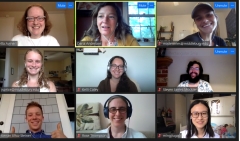How to Succeed in Virtual Teams
| by Sheila Cameron, Anne Campbell, Thi Nguyen MAIEM ’20, Melissa Sorenson, and David Wick
No matter the field or discipline, remote work (and remote learning) are becoming increasingly crucial and may be the key to your success. Our experts explore how to succeed in intercultural virtual teams.




